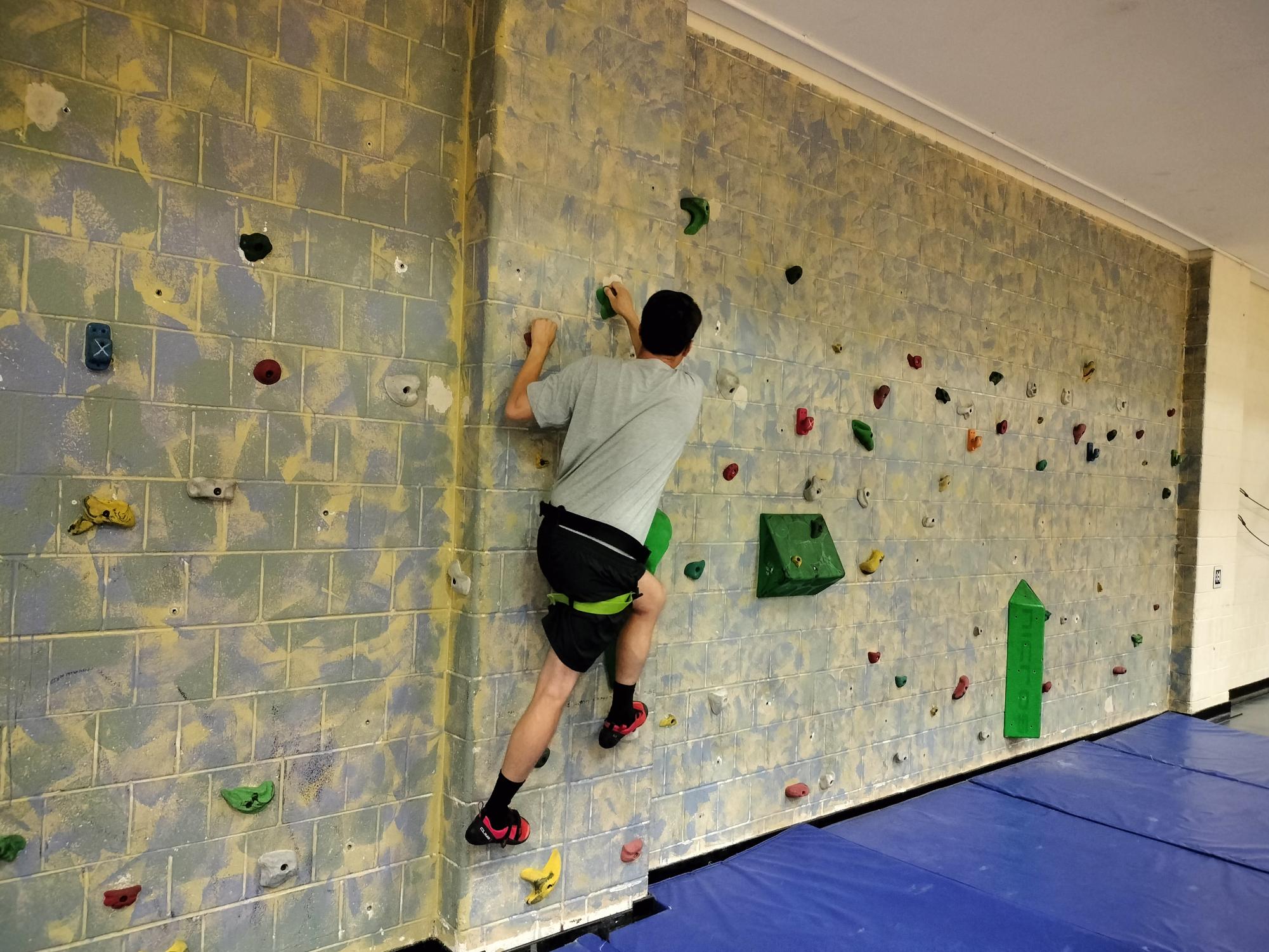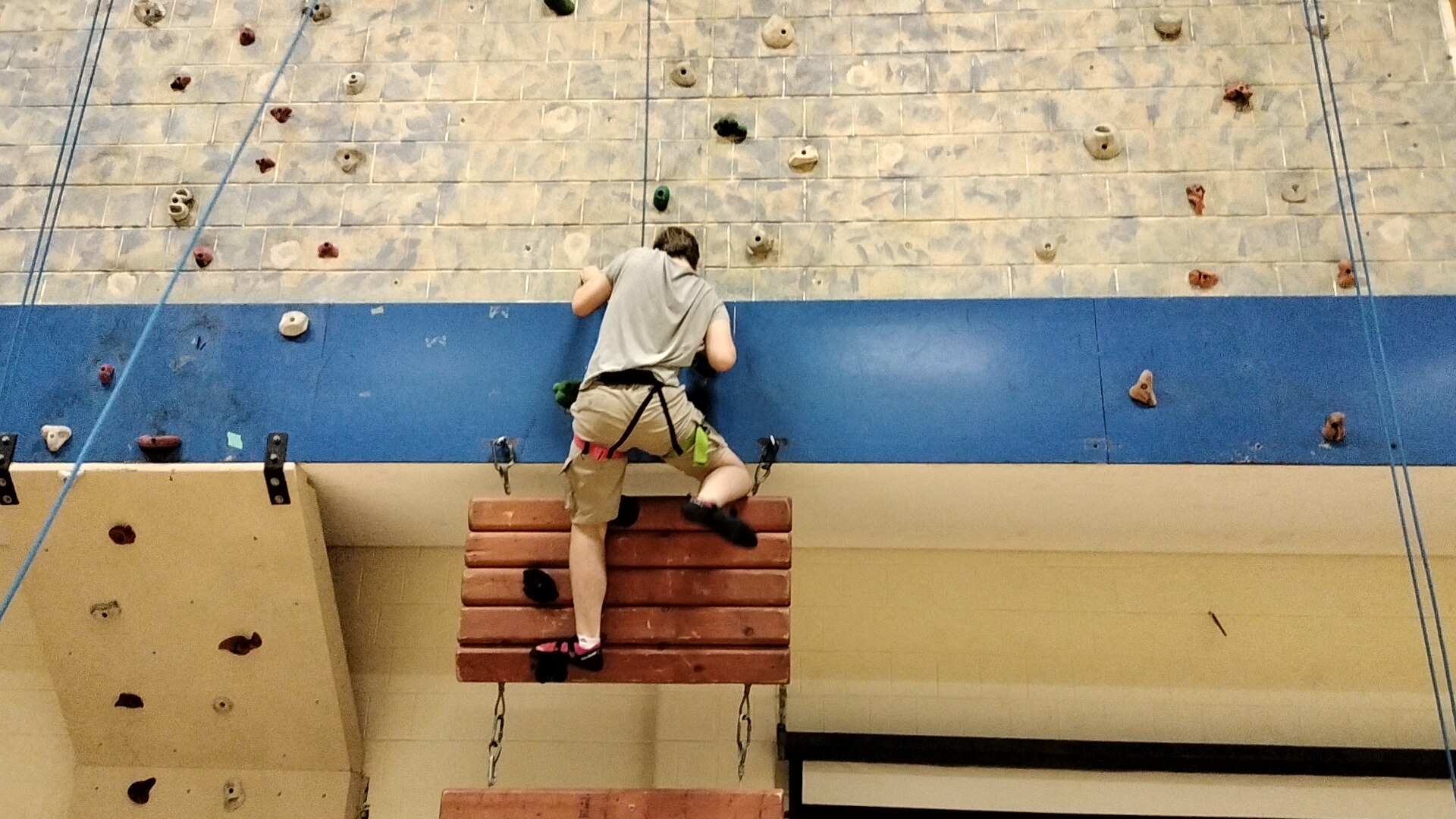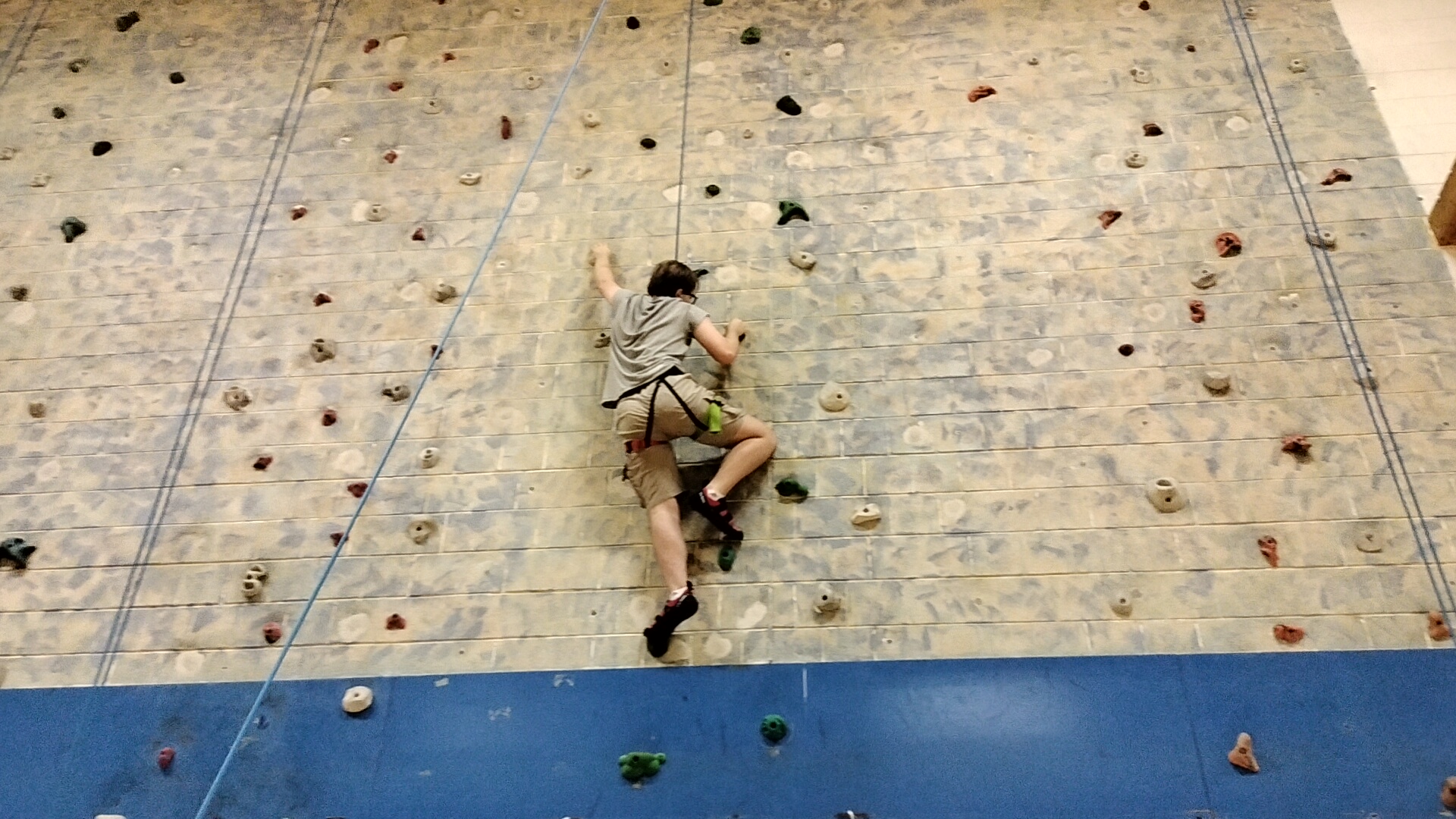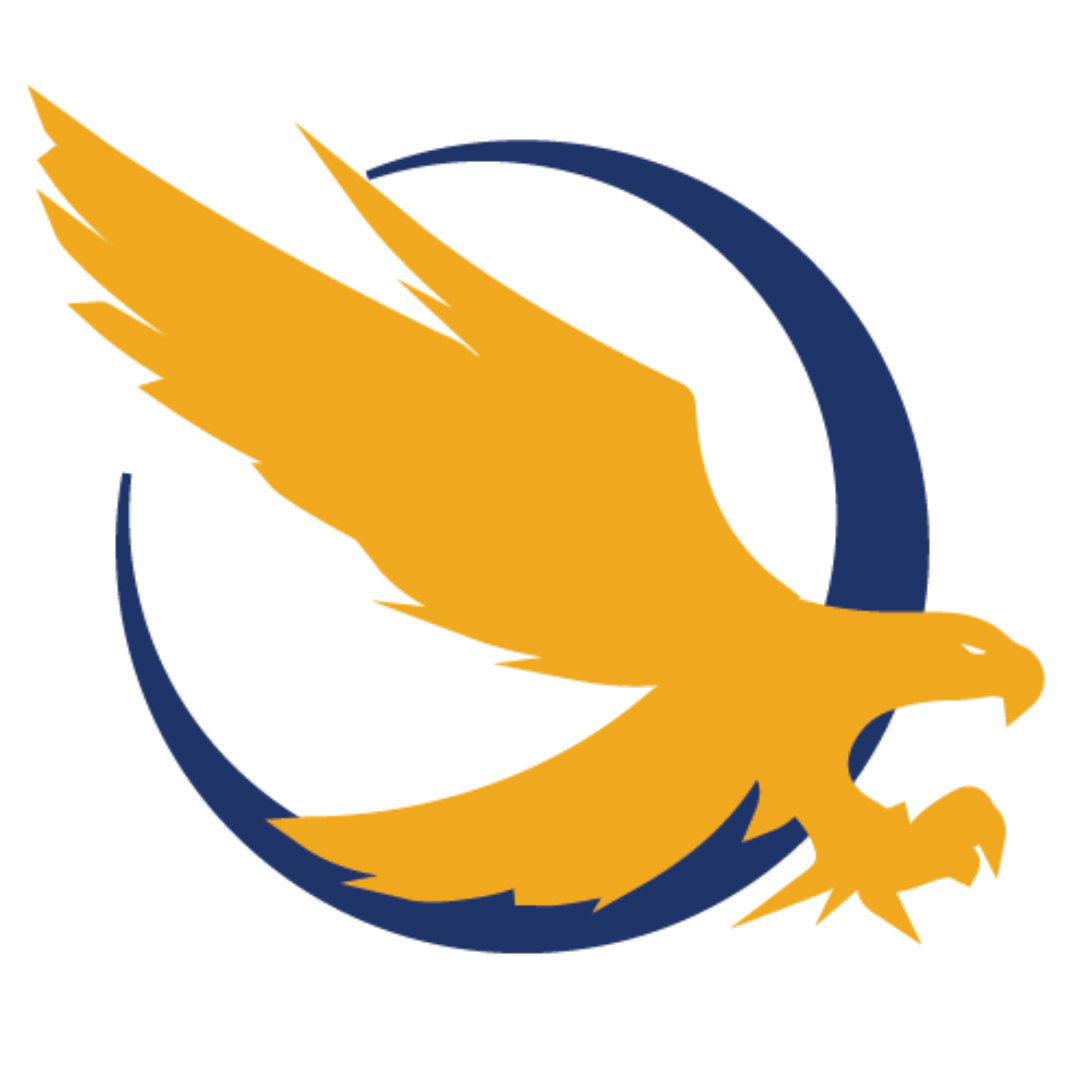Last year’s article in The Independent on rock climbing compared the climbing sport to video games as a way to encourage more novices to play the game of climbing. Like in video game design, when newcomers try something new and it feels too difficult, they are likely to give up, not play anymore or play a different game. The sport of rock climbing is no different.

Both students and community members were allowed to climb at NEIU’s Campus Recreation on Monday and Wednesday evenings throughout the Fall semester. “I wanted more reasons to come to Chicago,” said Benjamin Rathert, Campus Recreation community member and mechanical engineer in Milwaukee, “I just wanted to get some [climbing] experience down and it’s fun to do so.”
According to an interview with the Independent, Jose Colón, belayer and undergraduate student in Cybersecurity, asks new patrons, “‘Have you done this before as for previous experience?’ And if they have, then we’ll point them towards the more medium routes like a V2.”

The sport of rock climbing uses at least two types of grading called the Yosemite Decimal System (YDS) and the Vermin Scale. These two grades of rock climbing are used at NEIU’s Campus Recreation. According to Colón, when introducing patrons about their climbing experience, “We’ll point them towards the more medium routes like a V2.” The Vermin scale of rock climbing walls ranges from V0 to V17, where V0 is the easiest for novice climbers, and V17 is the most challenging for professional climbers.
At least one of the rock climbing lanes, in accordance with the YDS, “would be like a 5.8,” said Keith Zhan, graduate assistant in charge of rock climbing operations, “That’s about a beginner to intermediate, so it’s a good transition stage, but if you need something easier than this, the [jug] holds help provide it, so it’s more like a 5.6 or a 5.7.” In other words, the climbing lanes start at the upper end of the beginner grades toward the intermediate grades. Unfortunately, the jugs were inverted, which allowed the grips to be an additional challenge beyond a novice’s capacity. Furthermore, inconsistencies arise when staff members use different grading scales to describe the same routes.
The YDS scale ranges from a 5.2 to a 5.15c. According to the sportrock website, beginner climbing lanes are graded 5.2 to 5.9, and they include more jugs and a more upright orientation of the jugs. Intermediate climbing lanes graded from 5.10a to 5.11d include jugs being replaced by small rocks, and fancier hand and foot movements are necessary to navigate to the top. Advanced climbing lanes graded from 5.12a to 5.13d require tremendous strength and dexterity. Professional climbing lanes graded from 5.14a to 5.15c can be found in natural outdoor rock formations and at athletic competitions.
“We made it easier this year, we made a few of [the lanes] easier [because] there’s a lot more hug holds, more jugs and assisting holds, [and] all the whites are on assisting holds,” Zhan said.

“It’s tough,” Rathert said as he shared his first impressions, “I would define myself as a beginner, so I don’t have a ton of training, [and] I’ve done easy courses before.” Rathert said the most challenging part of climbing is “knowing where to put your feet and knowing where the next step would be.”
“I would say I probably made about 40 [or] 45 percent of the wall [because] like I said it’s still new to me,” Rathert said, “I wasn’t expecting it to be tough.” Rathert agreed that more rock holds would make climbing easier, but also having the holds point upwards would allow a more comfortable grip to pull oneself up.
A facet that makes holds and jugs more challenging is inverting the position of the rock and pointing them downwards, and if they are pointed upwards, scoring of the climbing lane becomes easier because the grip becomes more conventional. The easiest score on the YDS scale is a 5.2, which means there will be more jugs, and the holds of the jugs will be pointing upwards, while the ascent will be more straightforward without the need for fancy footwork, foot swapping or crossing of the feet.
“If you don’t have a grading, then you don’t know where you’re gonna be at, then you can just be climbing endlessly and not know if you’re making progress or not,” said Zhan. However, some climbers may desire an endless climb to practice and memorize the lane. Furthermore, novices may want a relaxed and leisurely climb to reach the top on one of the five lanes to feel triumphant, gain confidence, continue the sport, conquer their fear of heights, get comfortable experiencing heights, feel motivated to try other lanes and compare the lanes to each other.
“I thought there would at least be an easy course, so I was expecting to at least get one of the walls down,” said Rathert. Rathert was referring to ‘flashing’ an easy climbing lane, which means completing the ascent by ringing the bell at the top. Perhaps having one super easy lane acting as a confidence-builder would encourage more newcomers to join in the fun.
Rathert said, “I like the different obstacles to get onto the wall, [and] I think those are a nice addition,” such as the woven rope ladder. He said that the obstacles are a good warm-up before ascending the wall portion of the climb.

Within the art of game design, the game designer must find the right balance of providing ease, challenge and opportunities to memorize or speedrun the level. Designing a climbing lane is no different than game design. When one climbing lane builds a climber’s confidence, the remaining lanes can definitely be made to shatter that obtained confidence.
Video games and climbing are similar in the fact that some video games have endless modes, such as “Tetris”, “Super Mario Maker 2” and “Cities Skylines”. Other puzzle games, platformers and simulation genres of video games have endless modes as well. After all, the climbing gym is in a recreation center, so it should provide a mix of fun, leisure and challenge for as many people as possible. Furthermore, by providing just one single easy climbing lane, it will become more inclusive and better accommodate the very diverse student body of NEIU.
Having more inclusivity stems from the fact that everybody has a different climbing style. Some people depend on their upper body for more of the heavy lifting while others depend on their lower body. Also, there may be some patrons who use a mix of both. These are all considerations that the staff members must make to increase the inclusiveness of the climbing sport.
When the Independent asked whether staff members are willing to make one of the climbing lanes easier so novices feel more welcome for climbing, Zhan responded, “Yeah of course I mean it depends on each individual that comes in, but like if they’re a beginner, [and] they say it’s hard, then we’ll probably just adjust it for them.”
The initiative of Campus Recreation’s climbing gym should not be to make patrons into athletes. Instead, the initiative should be to just have some fun, make some memories and feel triumphant by reaching the top. For some individuals, getting to the top is already a symbol of courageousness especially if they formerly had a fear of heights. Such considerations among the staff members will definitely allow more patrons to explore the wide world of sports.

Zhan was more in favor of grading the climbing lanes rather than climbing endlessly. However, climbing an easy lane endlessly can actually be fun and interactive, such as speed-climbing, which is climbing a single lane in as many reps as possible until the climber is swamped or doing time trials while climbing. Last year, there were several patrons who engaged in a relentless sequence of speed climbs until they tired themselves out. Climbing endlessly may be considered a form of exercise much like using a treadmill or elliptical.
Speed climbing is similar to speed running levels of video games. It involves endurance, memorization and precision of each climbing lane. Thus, climbing becomes an art form. Also, climbing endlessly has the added benefit of acting like a tread wall machine, which is like a treadmill, but it’s vertical and has jugs mounted all over the conveyor belt’s surface. Currently, Campus Recreation has no such rotating tread wall machine.
As the Fall 2023 semester comes to an end, the expectation is for the belayers to dismantle the climbing lanes and rebuild new routes by reorganizing, reorienting and rearranging the hug holds, jugs, colors and assisting holds for the Spring 2024 semester just like they have done at the start of every semester. This month may be a climber’s last chance to experience the current routes. The question that is in the back of everybody’s mind is whether or not the climbing experience at NEIU will be more inclusive to attract a broader range of students during the upcoming semester.
If a potential novice climber is looking for a chill and endless climb to reach the top repeatedly, then this is definitely the wrong climbing gym to achieve it during the current semester. If you are an intermediate or advanced climber or looking to struggle as a beginner, you may be quite satisfied with NEIU’s climbing gym for now.





